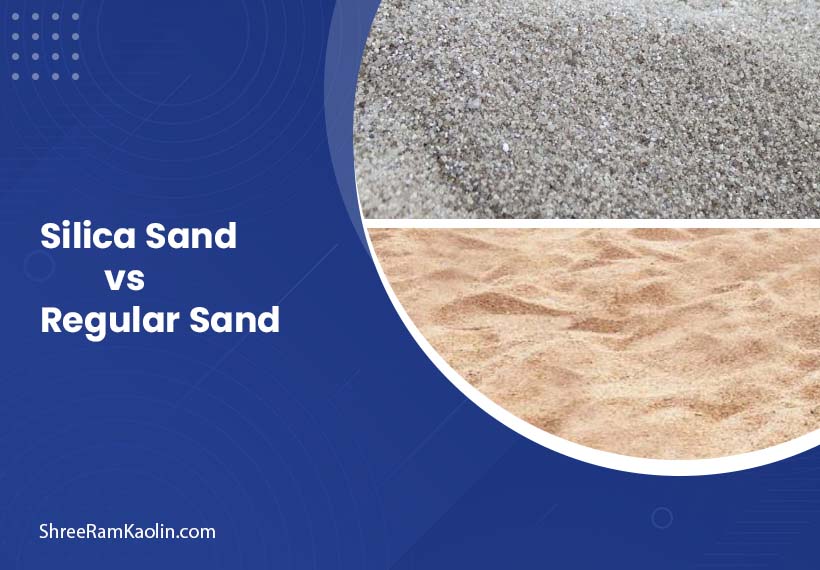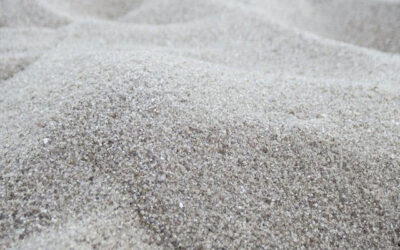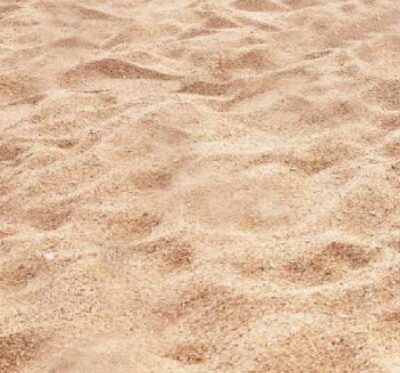Silica Sand vs Regular Sand: Understanding the Key Differences

If you’ve ever wondered about the differences between silica sand and regular sand, you’re in the right place! Though they may look similar, they have unique properties that set them apart. This guide will help you understand these differences in detail.
What is Silica Sand?

Silica sand (often known by its industrial designation of silica sand) is an extremely pure quartz sand composed of silicon dioxide (SiO2). What sets silica apart?
Composition of Silica Sand
Silica sand is made up mostly of quartz, an abundant mineral found throughout nature. The chemical formula for silica sand (SiO2) shows its composition: one silicon atom bound tightly between two oxygen atoms gives silica its special properties.
Properties of Silica Sand
Purity
Silica sand stands out for being of unparalleled purity; often over 95% pure quartz makes silica so valuable in industrial applications. This feature of silica sand sets it apart from its competitors.
Grain Size and Shape
Silica sand grains tend to be round or sub-angular with uniform size distribution – an aspect essential to many applications of silica sand. Imagine trying to create a smooth glass surface using irregularly shaped grains! That would not work!
Durability
Silica sand has long been recognized for its resilience and chemical inertness – qualities which have made it indispensable in many industrial processes.
What is Regular Sand?

Regular sand, on the other hand, is what you’d typically find on beaches or in everyday construction work. But what sets it apart from its silica cousin?
Composition of Regular Sand
Regular sand, on the other hand, is commonly seen on beaches or used in everyday construction work – yet what sets it apart from its silica cousin is unclear.
Properties of Regular Sand
Variability in Composition
Unlike silica sand, regular sand can vary greatly in composition depending on its source. Beach sand from one location might be vastly different from sand found in a riverbed elsewhere.
Grain Size and Shape
Sand grains come in all sorts of shapes and sizes; from round, to angular or even flat depending on their origin and the degree of weathering they’ve endured.
Durability
While regular sand can be quite durable, it’s generally not as resistant to heat and chemical reactions as silica sand. This makes it less suitable for certain industrial applications.
Key Differences Between Silica Sand and Regular Sand
Now that we’ve got a handle on what makes up each type of sand, let’s break down the key differences:
Chemical Composition
The most significant difference lies in their chemical makeup. Silica sand is almost pure quartz, while regular sand is a mixture of various minerals and rock fragments.
Physical Properties
Silica sand tends to have more uniform grain size and shape, whereas regular sand can be quite varied. This uniformity gives silica sand an edge in applications requiring consistent particle size.
Industrial Applications
Due to its purity and durability, silica sand has many industrial uses; traditional sand tends to be limited only for construction or landscaping projects.
Uses of Silica Sand
Silica sand’s unique properties make it invaluable in various industries. Let’s explore some of its primary uses:
Glass Manufacturing
Have you ever considered what goes into creating glass products like your windows and bottles? Silica sand is the main component in producing pure and strong glasses suitable for windows, bottles and fiber optics.
Foundry Work
Silica sand is used extensively in metal casting as mold-making material due to its heatproof qualities, making it suitable for withstanding extreme temperatures of liquid metal casting processes.
Hydraulic Fracturing
As commonly referred to, hydraulic fracturing or “fracking,” this controversial oil and gas extraction technique employs silica sand to prop open cracks in rock formations so oil and gas can flow more freely from beneath them.
Uses of Regular Sand
While it may not have the industrial cachet of silica sand, regular sand has plenty of important uses:
Construction
Regular sand is a crucial component in concrete and mortar. It helps to provide bulk and strength to these essential building materials.
Landscaping
From beautiful gardens to golf courses, regular sand is used extensively in landscaping. It helps with drainage and can create attractive features.
Beach Nourishment
When beaches erode, regular sand is often used to replenish them, helping to maintain coastlines and protect coastal communities.
Environmental Considerations
As with any natural resource, the extraction and use of sand come with environmental implications:
Mining Impact
Both silica and regular sand mining can have significant impacts on landscapes and ecosystems. Responsible mining practices are crucial to minimize these effects.
Health Concerns
Silica dust, produced when working with silica sand, can be harmful if inhaled. This has led to strict safety regulations in industries that use silica sand.
Choosing Between Silica Sand and Regular Sand
So, how do you decide which sand to use? Here are some factors to consider:
Factors to Consider
- Purpose: What are you using the sand for?
- Purity requirements: Does your application need high-purity silica?
- Grain size and shape: Is uniformity important for your project?
- Environmental impact: Are there eco-friendly alternatives available?
Cost Comparison
Generally, silica sand is more expensive than regular sand due to its purity and processing requirements. However, for applications that require its unique properties, the cost is often justified.
FAQs
Is silica sand more costly than regular sand?
Yes, silica sand tends to be more costly due to its higher purity levels and processing requirements.
Are regular or silica sand compatible alternatives when applied for industrial uses?
No. The purity and uniform properties of silica sand make it essential in many industrial processes.
Is silica sand safe to use in children’s sandboxes?
Although silica sand is generally safe for children to play in, to minimize potential health hazards it would be prudent to invest in play sand designed specifically for their use.
What makes silica sand different than beach sand?
Silica sand is almost pure quartz while beach sand contains various minerals as well as shell fragments and organic debris that varies with every beachfront location.
Can silica sand be found naturally, or must it always be processed?
Silica sand deposits exist naturally; however, most industrial silica is processed to meet specific purity and size specifications.
Conclusion
Silica and regular sand may seem similar at first glance, yet these two varieties vary considerably in composition and application. Understanding their distinctions will enable you to make educated choices when working on industrial projects or simply exploring nature around you.
On your next beach visit or construction job, take some time to contemplate the sand beneath your feet – silica is prized for its purity and uniformity, while regular sand contains many different minerals with their own set of advantages; either way you are witnessing an intriguing material which plays an essential part of our world.

